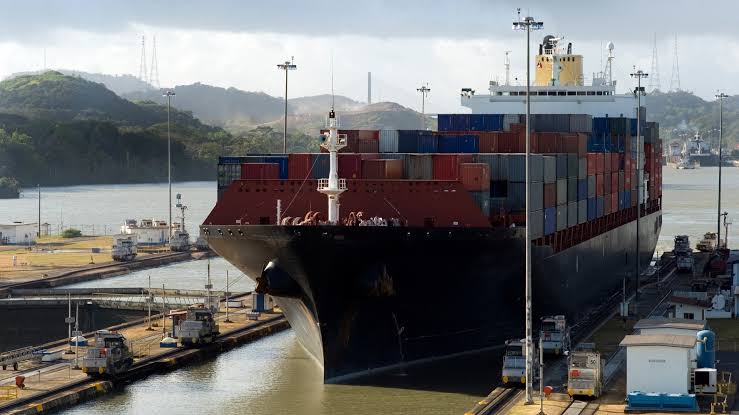Panama City, 25 Aug, 2023 (GNP): The Panama Canal Authority has announced a continuation of transit restrictions as a result of drought-induced low water levels, affecting the pivotal maritime passageway that facilitates 6 percent of the world’s global maritime trade. This decision comes after the initial implementation of restrictions earlier this year, which led to a backlog of vessels awaiting passage through the canal.
Initially introduced to mitigate the challenges posed by decreased water levels, the extended restrictions are anticipated to remain in place for a minimum of 10 additional months. The canal’s deputy administrator, Ilya Espino, stated that the ongoing increase in vessel arrivals, particularly with the approach of the peak season in December, underscores the urgency of the situation. “Merchandise for Christmas is moving rapidly, which has contributed to an uptick in vessel traffic,” Espino emphasized during an interview.
Also Read: FAO conducts simulations to prevent drought crises
The Panama Canal’s strategic significance lies in its role as a conduit for maritime transport, facilitating seamless transit between the Atlantic and Pacific Oceans. Despite its critical function, the canal may experience diminished operational capacity for an extended period due to the current shallow water conditions.
These operational restrictions have compelled ship owners to adjust their cargo loads or explore alternative routes. To mitigate potential disruptions, Ilya Espino urged vessel owners to proactively secure reservations, a measure that could help alleviate delays. Presently, the backlog of vessels awaiting passage stands at approximately 115, as indicated by official data.
The canal’s authorities aim to navigate these constraints until the arrival of the upcoming rainy season. The absence of sufficient rainfall has exacerbated the task of navigating ships through a complex system of locks designed to function as water elevators.
Also Read: Second Russian crude oil cargo arrives at Karachi port
Encompassing an 80-kilometer (50-mile) stretch, the Panama Canal serves as a vital conduit for vessels originating from the United States, China, and Japan, with an average of 32 vessels transiting daily. This figure has decreased from 40 vessels per day in the previous year. The extended waiting times for entry, formerly ranging from three to five days, have now escalated to an average of 11 days.
The expansion project undertaken in 2016 was heralded as a breakthrough for commercial trade between North America and Asia. The current situation has prompted a response from Panamanian President Laurentino Cortizo, who clarified that while the country is indeed facing restrictions, the canal is not entirely closed.
In light of these developments, the Panama Canal Authority remains committed to effectively managing the challenges posed by the drought-induced low water levels. The sustained importance of the canal for international trade underscores the need for adaptive measures and long-term strategies to ensure its continued operational efficiency.

